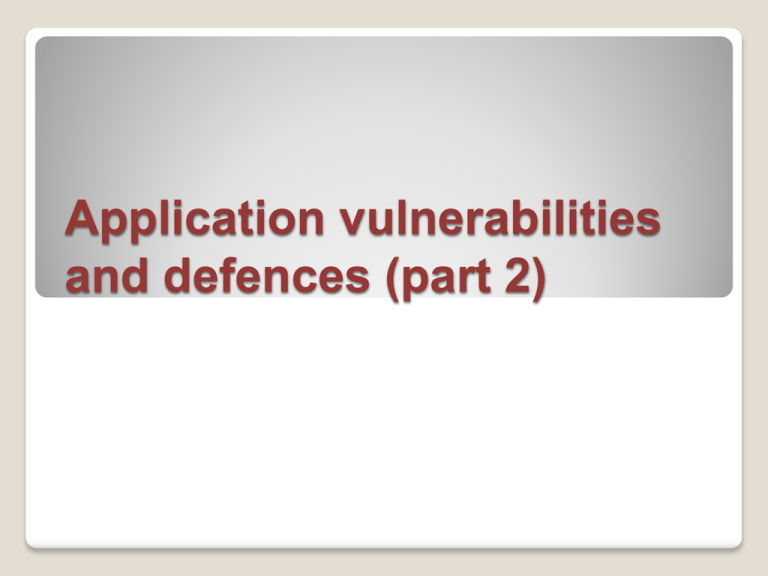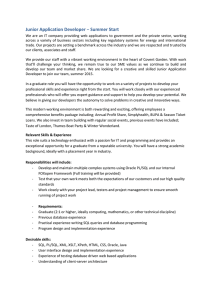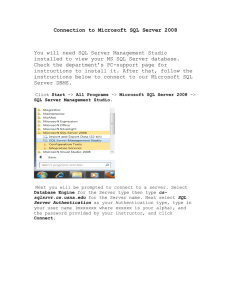Application vulnerabilities and defences (part 2)
advertisement

Application vulnerabilities
and defences (part 2)
The problem with the
examples in lecture (6-2)
is that the application
allows unfiltered input
into the SQL.
The application needs to
filter out all characters
with special meaning in
SQL, like single or double
quotes, semi-colons, the
comment introducer -etc.
Avoiding
SQL
injection
Never concatenate user input with
application SQL to form the SQL sent to
the database.
The easy way to do this is to use
parameterized statements.
Parameterized statements are where the
variable parts of the SQL are replaced with
markers (usually ?).
Instead of concatenating the user input
for the email address like this:
select email from users where email =
'<user_input>'
select email from users where email = ?
The SQL is prepared when the SQL Engine
parses it, validates it and notes that there
is one parameter for the email address.
When you execute it, you pass the
parameter separately from the SQL. How
you do this depends on the language you
are using.
char *user_input; /* points to user input string */
SQLPrepare ('select email from users where email = ?');
SQLBindParameter (1, user_input);
SQLExecute;
Now it does not matter if a user enters any special SQL
characters, because they are never parsed by the SQL
engine.
Do not follow links from sites that
navigate to security-sensitive pages
referencing personal or business
information.
Always practice obtaining a list of
attacks that have occurred on
particular sites or messages boards.
Do not trust links given on other
sites such as e-mail or message
boards.
Avoiding XSS
To prevent CSRF attack need to generate
Synchronizer Token Pattern.
These challenge tokens are inserted within the
HTML forms and links associated with sensitive
server-side operations
By including a challenge token with each request, the
developer has a strong control to verify that the user
actually intended to submit the desired requests.
Avoiding CSRF





